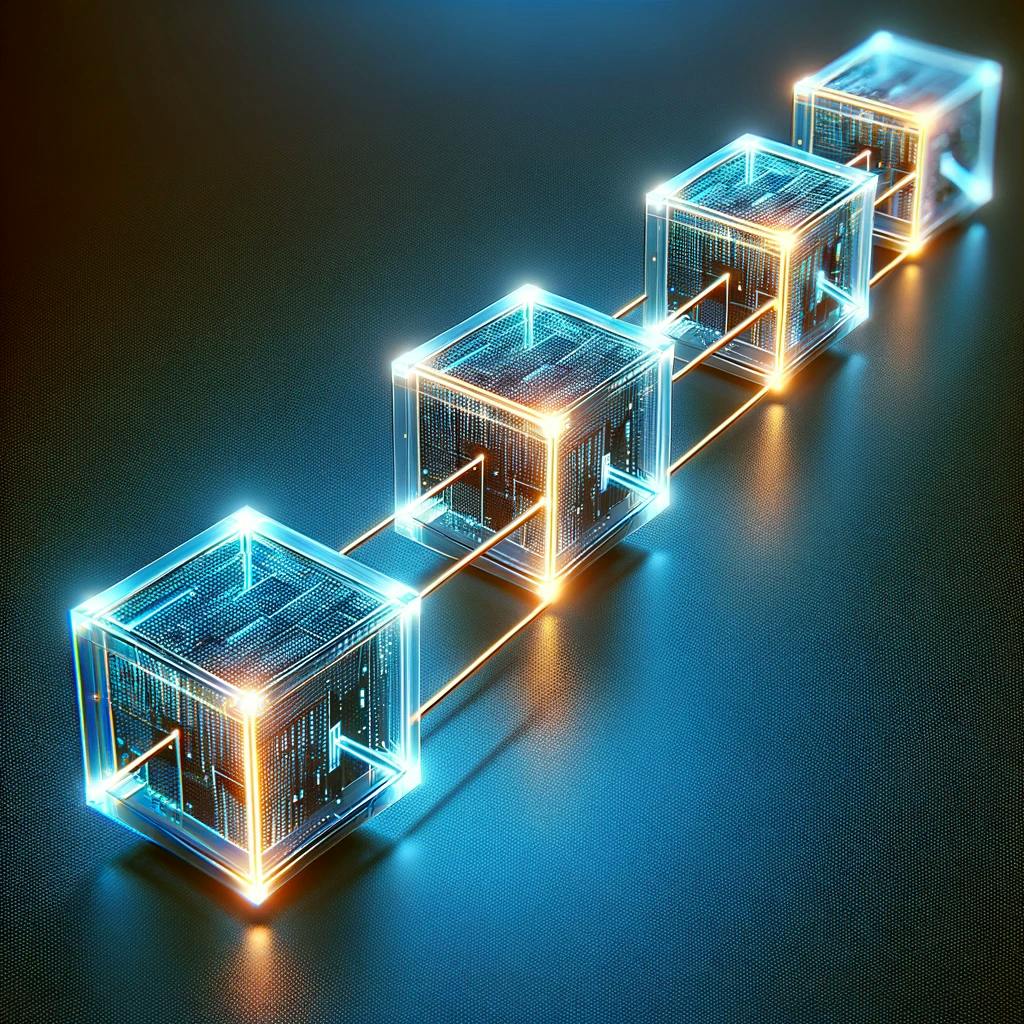Table of contents
Blockchain technology has revolutionized many industries, but its scalability remains a significant challenge. Layer 2 blockchains offer a promising solution, enabling faster and cheaper transactions without compromising security or decentralization.
What is a Layer 2 blockchain?
A Layer 2 blockchain is a network that operates on top of an existing blockchain, such as Ethereum. It processes transactions off-chain, meaning they are not directly recorded on the main blockchain. Instead, Layer 2 networks bundle transactions and submit them to the main blockchain periodically. This reduces the load on the main blockchain and enables faster and cheaper transactions.

How do Layer 2 blockchains work?
Layer 2 blockchains operate on a foundational principle where transactions initiated by users are processed and executed within the Layer 2 environment itself, significantly enhancing transaction throughput and reducing latency compared to the underlying Layer 1 blockchain. Upon successful execution of these transactions, a summary of the state changes, often referred to as the state root, is compiled by an entity known as the sequencer. This state root encapsulates the outcome of numerous Layer 2 transactions in a compressed format. Subsequently, the sequencer submits this state root to the Layer 1 blockchain, ensuring that the final state is recorded on the base layer. This mechanism not only accelerates processing speeds and decreases transaction costs but also leverages the robust security and decentralization properties of the Layer 1 blockchain, as the integrity of Layer 2 transactions is ultimately anchored to the main chain.
Types of Layer 2 blockchains
Rollups are broadly categorized into two types: Optimistic Rollups and Zero-Knowledge (zk) Rollups, each with distinct mechanisms for handling transactions and ensuring security.
Optimistic Rollups operate on the principle of trust, or rather, the assumption that all transactions are valid by default. They execute transactions off-chain and submit a summarized version of these transactions to the Layer 1 blockchain without immediate computation or proof of validity. Instead, they rely on a challenge period during which fraudulent transactions can be disputed by observers. If a transaction is challenged, the roll-up performs a computation to verify the dispute's validity. This optimistic approach allows for greater scalability but introduces a delay for withdrawals and finality due to the challenge period, making it slightly less secure but more scalable for applications that can tolerate a delay in transaction finality.
Zero-Knowledge Rollups (zk-Rollups), on the other hand, enhance privacy and security through cryptographic proofs, specifically zero-knowledge proofs. These proofs allow zk-Rollups to validate the correctness of all transactions in a bundle without revealing any underlying transaction data. Each batch of transactions processed off-chain is accompanied by a validity proof when submitted back to the main chain. This proof certifies that the transactions are accurate and adhere to the blockchain's rules without requiring any additional information. The use of cryptographic proofs eliminates the need for a challenge period, offering immediate finality and reducing the potential for fraud. Zk-Rollups are particularly suitable for applications demanding high security and privacy, albeit they are more complex and computationally intensive to generate than the proofs in Optimistic Rollups.
Benefits of Layer 2 blockchains
Layer 2 blockchains offer several benefits over traditional blockchain networks, including:
Faster transactions: Layer 2 networks can process transactions much faster than the main blockchain, often within seconds.
Cheaper fees: Layer 2 networks also have significantly lower transaction fees than the main blockchain.
Increased scalability: Layer 2 networks can help to scale the main blockchain by offloading the burden of transaction processing.
Security and decentralization: Layer 2 networks are built on top of existing blockchains, so they inherit the security and decentralization of the underlying blockchain.
Examples of Layer 2 blockchains
Some popular Layer 2 blockchain networks include:
Polygon: Polygon is a Layer 2 scaling solution for Ethereum that uses a variety of Layer 2 technologies, including state channels, plasma, and optimistic rollups.
Arbitrum: Arbitrum is an optimistic rollup solution that provides Layer 2 scaling for Ethereum.
Optimism: Optimism is another optimistic rollup solution that provides Layer 2 scaling for Ethereum.
ZK Sync: ZK Sync is a zero-knowledge rollup solution that provides Layer 2 scaling for Ethereum.
Conclusion
Layer 2 blockchains are a promising solution to the scalability challenges of blockchain technology. By enabling faster and cheaper transactions without compromising security or decentralization, Layer 2 blockchains are helping to make blockchain more accessible and useful for everyone.
Impact on the future of blockchain
Layer 2 blockchains have the potential to revolutionize the way we use blockchain technology. By enabling faster and cheaper transactions, Layer 2 blockchains can make blockchain more accessible and useful for a wide range of applications.
For example, Layer 2 blockchains can enable micropayments, which are small payments that are currently impractical on most blockchain networks due to high transaction fees. Layer 2 blockchains can also enable new use cases for blockchain, such as decentralized gaming and social media.
As Layer 2 blockchain technology continues to develop and mature, we can expect to see it play an increasingly important role in the future of blockchain.
